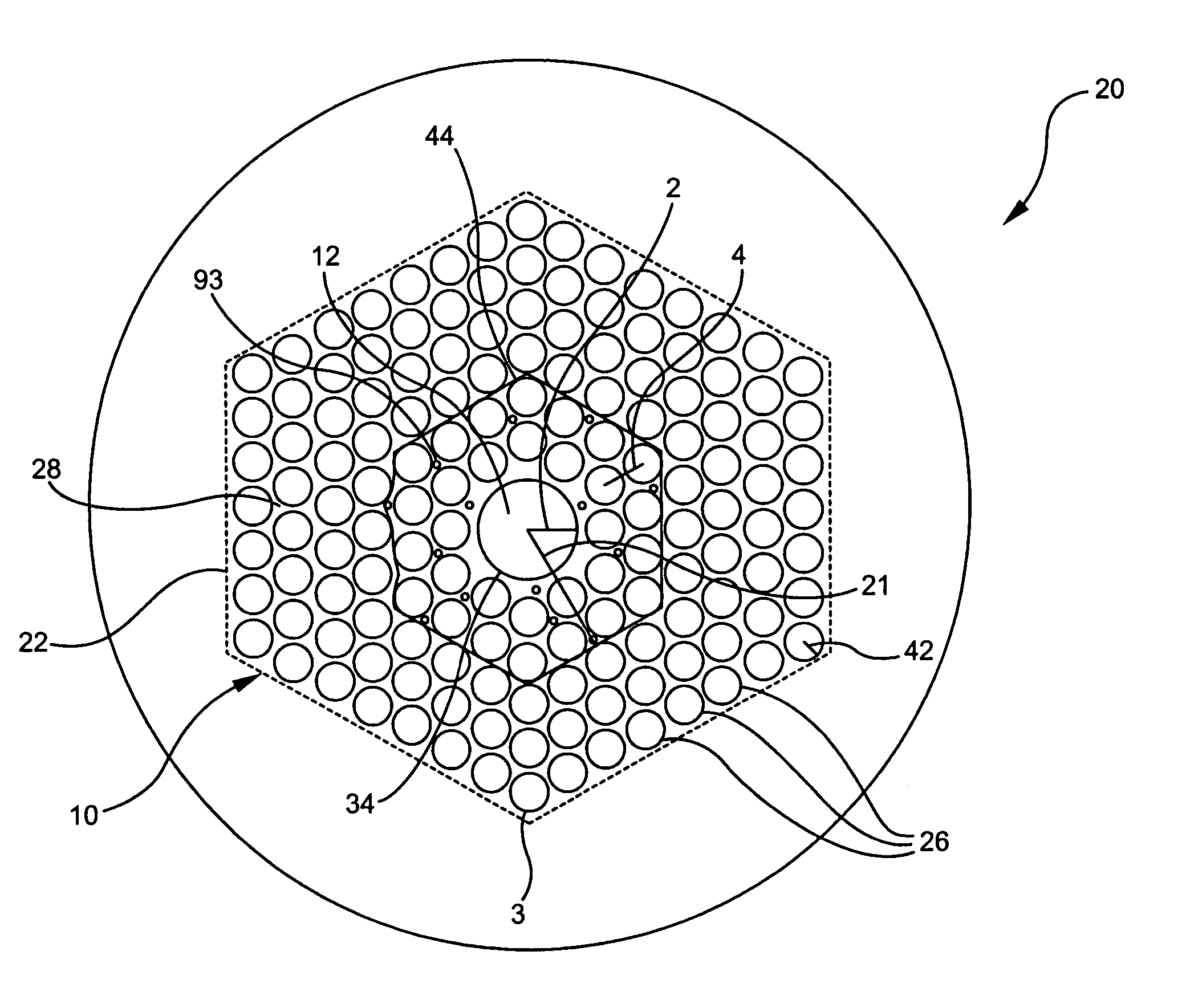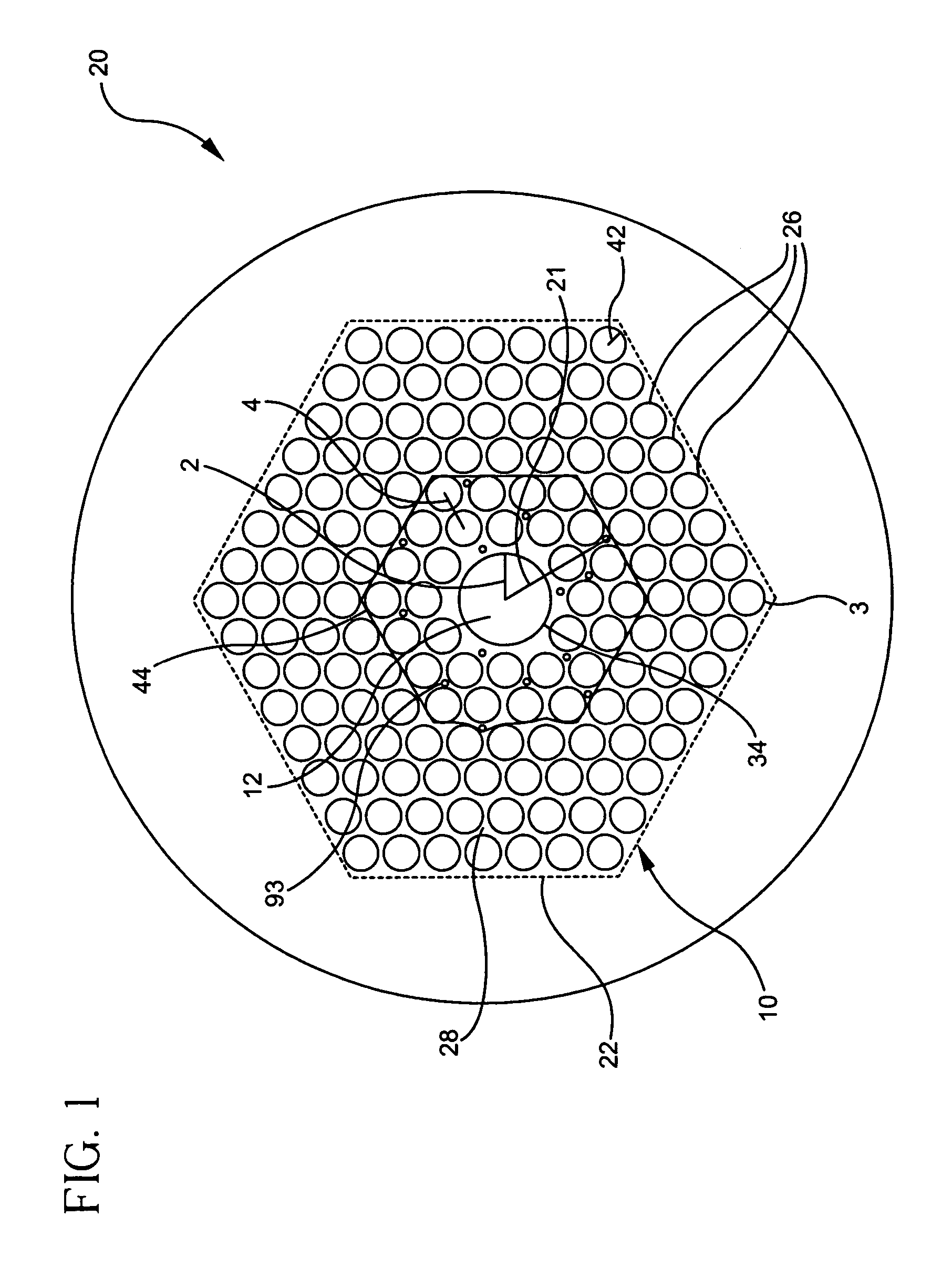Active photonic band-gap optical fiber
a photonic band and optical fiber technology, applied in the field of optical waveguides, can solve the problems of limiting the ability to scale to higher powers, limiting the maximum effective area, so as to achieve the effect of enhancing the core mod
- Summary
- Abstract
- Description
- Claims
- Application Information
AI Technical Summary
Benefits of technology
Problems solved by technology
Method used
Image
Examples
Embodiment Construction
[0047]Reference will now be made in detail to the present preferred embodiments of the invention, examples of which are illustrated in the accompanying drawings. Wherever possible, the same reference numbers will be used throughout the drawings to refer to the same or like parts. One aspect of the present invention relates to a photonic band-gap fiber (PBGF), even though the present invention also cover waveguides that are planar or of other shapes.
[0048]Referring to FIG. 1, a cross-sectional schematic view of an embodiment of a photonic band-gap fiber (PBGF) or photonic band-gap crystal waveguide according to the present invention is shown. Photonic band-gap fiber 20 includes a cladding region 22 formed from a photonic band-gap structure or crystal 10. In the Example of FIG. 1, the photonic band-gap structure 10 includes a periodic array of holes 26 formed in the matrix material or webbing 28 of cladding region 22. Holes 26 of FIG. 1 are schematically depicted as being circular in ...
PUM
 Login to View More
Login to View More Abstract
Description
Claims
Application Information
 Login to View More
Login to View More - R&D
- Intellectual Property
- Life Sciences
- Materials
- Tech Scout
- Unparalleled Data Quality
- Higher Quality Content
- 60% Fewer Hallucinations
Browse by: Latest US Patents, China's latest patents, Technical Efficacy Thesaurus, Application Domain, Technology Topic, Popular Technical Reports.
© 2025 PatSnap. All rights reserved.Legal|Privacy policy|Modern Slavery Act Transparency Statement|Sitemap|About US| Contact US: help@patsnap.com



